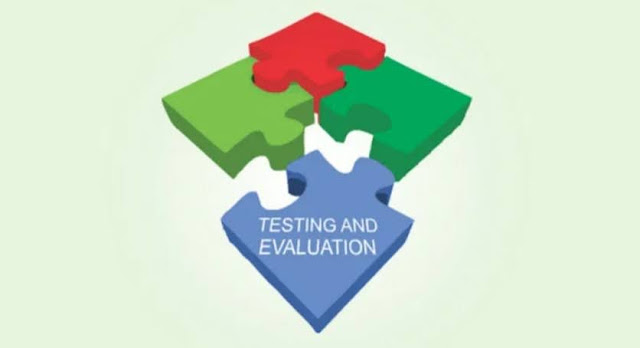Thinking Activity: Testing and Evaluation
Hello friends!!
Today I write on thinking activity testing and evaluation given by Dr Dilip Barad sir.
Test & Evaluation (T&E) is the process by which a system or components are compared against requirements and specifications through testing. The results are evaluated to assess progress of design, performance, supportability, etc.
1) Write on validity and reliability of the test:
Validity:-
Validity tells you how accurately a method measures something. If a method measures what it claims to measure, and the results closely correspond to real-world values, then it can be considered valid. There are four main types of validity:
Construct validity: Does the test measure the concept that it’s intended to measure?
Content validity: Is the test fully representative of what it aims to measure?
Face validity: Does the content of the test appear to be suitable to its aims?
Criterion validity: Do the results correspond to a different test of the same thing?
Note that this article deals with types of test validity, which determine the accuracy of the actual components of a measure. If you are doing experimental research, you also need to consider internal and external validity, which deal with the experimental design and the generalizability of results.
Reliability:
The term reliability in psychological research refers to the consistency of a research study or measuring test.
There are two types of reliability – internal and external reliability.
- Internal reliability assesses the consistency of results across items within a test.
- External reliability refers to the extent to which a measure varies from one use to another.
2) Write on practicality of the test:
It refers to the economy of time, effort and money in testing. In other words, a test should be easy to design, easy to administer, easy to mark, and easy to interpret the results (Bachman and Palmer, 1996).
Importance of practicality of a test:
The teachers, particularly untrained teachers can easily administer the tests which have been constructed/ considering practicality. The parents can be informed with right test results if the practical considerations have been taken care while constructing a test, which they will use in decision making about their children. Economical tests may save unnecessary expenses on stationery, print materials, photocopies and so on. True interpretations of test scores will be used by the students in their own plans and decisions (Linn & Gronlund, 2000).
Limitations:
• There are chances of giving wrong directions to students by untrained teachers while constructing or administering the tests.
• If time is reduced for taking test, the reliability of the test is reduced.
• Chances of misinterpretation and incorrect scoring in the absence of uniform criteria.
• Cost of testing is sometimes given far more weight than it deserves. Tests are relatively inexpensive and cost may not be a major consideration (Swain et al, 2000).
3) What do you understand by backwash?
Backwash occurs when the assessment determines what and how the students learn more than the curriculum does. ... He suggests that “if a test is regarded as important, if the stakes are high, preparation for it can come to dominate all teaching and learning activities.
The backwash effect (also known as the washback effect) is the influence that a test has on the way students are taught (e.g. the teaching mirrors the test because teachers want their students to pass). The washback effect is the outcome of a test or an examination which results either in positive or in a negative way.
4) Difference between assessment and evaluation:
Definition of Assessment
Assessment is defined as a methodical way of acquiring, reviewing and using information about someone or something, so as to make improvement where necessary. The term is interpreted in a variety of ways, i.e. educational, psychological, financial, taxation, human resource and so on.
Definition of Evaluation
The term ‘evaluation’ is derived from the word ‘value’ which refers to ‘usefulness of something’. Therefore, evaluation is an examination of something to measure its utility.
5) How do you define good assessment?
Assessment is accurate, consistent and repeatable. Feasible: assessment is practicable in terms of time, resources and student numbers. Educational impact: assessment results in learning what is important and is authentic and worthwhile.
practical tips for ensuring great assessment design:
- Look at the unit holistically. ...
- Write clear and specific instructions to students. ...
- Provide clear guidance to the assessor. ...
- Create checklists that ensure required levels of performance are met. ...
- Mapping, mapping, mapping. ...
- To summarise.
Thank you...
Thank you..





Comments
Post a Comment